Articles

Can Type 2 diabetes lead to heart disease?
Diabetes and heart disease have a direct connection, with the diabetic up to four times more likely to die from heart attack. The good news? It’s manageable, even preventable. The impact of diabetes Many older adults struggle with diabetes, or linger at the tipping point between abnormally high blood sugar and a formal diagnosis. But what does it actually mean to someone with the disease, making it so important to conquer with better eating habits and physical activity? Diabetes can reduce the independence of an older adult, requiring lifestyle modifications to manage the disease. They’re suddenly at risk of complications and health risks of other conditions due to the vulnerabilities triggered by the diabetes. It can eventually lead to a need for full-time assisted living care, as the diabetes increasingly compromises the health of the diabetic. Already at a high risk from diabetes as the seventh leading cause of death, the diabetic is also far more vulnerable to the number one cause: heart disease. How diabetes leads to heart damage High blood sugar is a known risk factor of heart disease, just like smoking, obesity, high blood pressure and cholesterol increase the risk. It’s common knowledge. Because it increases fatty material inside of our blood vessels, the danger of blockage is increased, along with the risk of heart attack or stroke. The vessels also become stiff and hard, making it easier for the fats to stick to the walls of the blood vessels. When a fat deposit hits a curve on its way into the heart, it’s more likely to cause a pile-up of other deposits behind it, much like a car accident at a freeway stack. But there’s another risk most aren’t aware of. Because a diabetic has a higher level of glucose in their blood, the composition—the viscosity—of

Make Your Day, and Share a Dinner
Repurposed from the Longevity Project and Healthy to 100 Articles by Ken Stern from June 26th, 2025 Since 2005, Gallup has annually conducted its World Poll to measure the attitudes, beliefs, and well-being of people across the world. The poll covers 140+ countries, is conducted in more than 145 languages, and reaches more than 150,000 people. It’s a treasure trove of data on the human experience. The poll often leads to important insights about human flourishing, and this year, the people at the World Happiness Report have studied the relationship between sharing meals and human happiness and sense of well-being. And perhaps not so surprisingly in an era when we are increasingly aware of the importance of social connection, the researchers found a significant, positive relationship in almost all regions. Not only do countries where meal sharing is more common tend to report higher levels of wellbeing, but this is true even when comparing people who live in the same country. The statistically significant relationship between communal eating and well-being holds true even after holding constant for characteristics such as gender, age, income, and living alone. American Lifestyle There is good news and bad news for Americans. The good news is that eating together brings immediate benefits. Americans who eat at least one meal with others report higher levels of happiness and lower levels of stress, pain, and sadness on that day. But the number of people who eat with others here in the US is in rapid decline. In 2023, roughly 25% of Americans reported eating all of their meals alone the previous day – an increase of more than 50% since 2003. Dining alone has become more prevalent for every age group, but especially for young people. Today, 18 to 24-year-olds in the US are 90% more likely

Finding Hope and Help with Memory Care Navigator
When a loved one begins to show signs of memory loss, the path forward can feel overwhelming, especially for a caregiver or loved one.

5 Daily Habits for Lifelong Wellness
Living a long, healthy life isn’t about dramatic overhauls or chasing the latest wellness trends, rather it’s about small, consistent actions that support your overall well-being. By building simple habits into your daily routine, you can boost your physical health, improve mental clarity, and increase your chances of aging gracefully. If you’re looking to make a positive change, here are five essential habits to incorporate into your everyday life for lifelong wellness. Movement Movement is one of the most powerful tools you have for lifelong wellness. Regular physical activity not only supports heart health but also improves sleep, boosts memory, and helps manage anxiety. The key is finding movement you enjoy so that it doesn’t feel like a chore. Whether it’s dancing, walking your dog, playing with grandkids, swimming, or joining a group fitness class, the best form of exercise is the one you’ll stick with. Aim to move your body every day and gradually work toward at least 150 minutes of moderate activity each week. When it’s something you look forward to, staying active becomes a joyful part of your routine. Hydration Hydration is another cornerstone of wellness. Water fuels everything from digestion and circulation to energy and focus. Unfortunately, it’s easy to overlook. Making hydration a habit by carrying a water bottle, setting reminders, or infusing your water with fruit or herbs, can help keep you on track. For healthy adults, about 15 cups of fluid per day for men and 11 cups for women is a general guideline, though individual needs can vary based on climate and activity level. Staying properly hydrated helps you feel better, think clearer, and stay energized throughout the day. Nutrition Nutrition also plays a vital role in your long-term health. Being mindful of what you eat doesn’t mean you have to follow
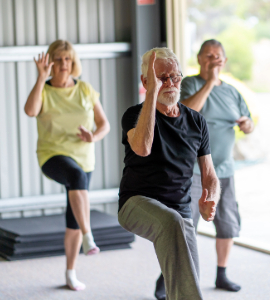
Staying Fit After 60: Your Guide to a Safe Exercise Plan
Reaching your 60s is a milestone worth celebrating and staying active is one of the best ways to make the most of these years. Regular exercise supports physical health, boosts mental well-being, and helps maintain independence. But starting or maintaining an exercise routine after age 60 requires thoughtful planning to stay safe, avoid injury, and get the most benefit. Here’s how to build a safe, enjoyable, and sustainable exercise plan after 60: Talk to Your Doctor First Before beginning any new exercise program, it’s wise to consult with your healthcare provider. They can evaluate your current health, identify any risks, and possibly suggest modifications or precautions based on chronic conditions such as arthritis, osteoporosis, or heart disease. Set Realistic, Enjoyable Goals The goal isn’t to train for a marathon—unless you want to! Focus on what you enjoy and what enhances your daily life. Maybe it’s walking with friends, gardening with more stamina, or being able to lift your grandchild without strain. Start small and build gradually. A 10-minute daily walk can evolve into longer sessions or more challenging activities as you gain confidence and endurance. Include These 4 Key Exercise Types To stay well-rounded and safe, your plan should include: Listen to Your Body Soreness is normal when starting a new activity, but sharp pain, dizziness, or extreme fatigue are red flags. Always stop and seek guidance if something doesn’t feel right. Incorporate rest days and vary your activities to give your body time to recover and prevent overuse injuries. Stay Social and Motivated Exercise is more enjoyable when it’s social. Join a walking group, take a senior fitness class, or invite a friend to be your workout buddy. It keeps you accountable and adds a layer of fun. Consider keeping a fitness journal or using a simple app to
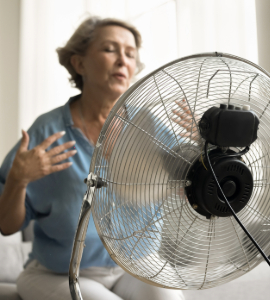
Summer Savings Tips: Stay Cool and Save Money
As the summer heat begins to rise, so can your energy bills. With long, hot days ahead, it’s easy to feel staying comfortable in your home is a costly endeavor. But don’t worry — there are plenty of simple strategies to help you stay cool, save money, and enjoy a more comfortable summer. Check out these smart and easy tips to lower your energy costs without sacrificing comfort. Keep Your House Cool Keeping your home cool can be a breeze if you use a few clever tricks to avoid cranking up the air conditioning all the time: Smart Ways to Lower Your Energy Bill Energy-saving habits don’t have to be hard to adopt. Here are some quick and easy changes to help keep your energy bill in check: Seek Out Relief from the Heat For those times when staying at home isn’t enough to escape the heat, you can find comfort at local cooling centers. In Maricopa County, several cool centers are available to help you beat the heat and stay safe. In Surprise, there are multiple cool centers open to the public. Find one by visiting the Arizona Heat Preparedness Network. Final Thoughts Staying cool during the summer doesn’t have to be expensive. By applying these easy-to-follow tips, you can lower your energy usage, reduce your bills, and enjoy a more comfortable home. So go ahead and take control of your energy costs this summer and make the most of the sunny season! Stay safe, save energy, and keep cool!

SMART Goals in Nutrition: A Clear Path to Healthy Eating
When it comes to nutrition, many people set out with the intention of eating healthier, but all too often, these goals are vague and hard to measure. Whether it’s eating “better” or losing “a few pounds,” these general goals can lead to confusion, lack of motivation, and, eventually, frustration when results aren’t seen. Without a clear plan, it’s difficult to stay on track and succeed. The key to achieving nutritional goals is to set them in a structured, actionable way. That’s where SMART goals come in. This method not only clarifies what you’re working towards but also increases the likelihood of success. Below, we’ll break down the SMART goal approach and provide examples of nutrition-based goals that follow this framework. What are SMART Goals? A SMART goal is a goal that is Specific, Measurable, Achievable, Relevant, and Timely. Here’s how each component works in creating a focused, actionable plan: Specific A SMART goal should be clear and unambiguous. It’s not just about wanting to “eat healthier,” but about pinpointing exactly what changes you’ll make and how you’ll do it. Measurable Having a measurable goal allows you to track your progress and know when you’ve achieved it. This could mean a certain amount of water consumed, a set number of meals cooked at home, or a specific nutrient target. Achievable Your goal should be realistic. While it’s important to aim high, it’s equally important to make sure the goal is something you can reasonably attain with your current lifestyle and resources. Start with small, manageable steps and build from there. Relevant The goal must align with your long-term health and wellness objectives. A goal that is meaningful and relevant to your own needs will keep you motivated and focused on making lasting changes. Timely A well-defined timeline adds a sense of

Your Fundamental Guide to Heart-Healthy Living
Your heart is essential for life. It pumps oxygen- and nutrient-rich blood throughout the body to nourish every single cell. Your heart allows you to think, move, digest food, and do anything that any cell in your body does. When your heart isn’t working well, or has a disease, this doesn’t only affect your heart. Because it influences every cell, heart disease can negatively impact any part of your body. The reality is that heart disease, also known as cardiovascular disease, is still the #1 cause of death in the U.S. One out of every five people in the U.S. who died in 2021, died of heart disease. This alarming statistic applies to everyone: men, women, and just about every ethnic background. Heart disease is manageable with nutrition, a healthier lifestyle, and, when needed, medical intervention. This blog post shares evidence-based nutrition and lifestyle habits that can help reduce your risk for, and help manage, heart disease. Enjoy a heart-healthy diet There is no single food that is all good or all bad. What’s important for heart health is not individual foods, but the overall eating style. Eating nutritious foods that are higher in vitamins, minerals, fiber, and antioxidants all play their role in reducing risk for heart disease. In short, a heart-healthy diet includes more vegetables, fruit, whole grains, and beans, and fewer processed foods that are often high in salt and saturated fat. Reduce intake of salt Sodium is found in salt (table salt is mostly sodium chloride). Too much sodium is linked to higher blood pressure and increased risks for heart disease and stroke. About nine out of ten people in the U.S. eat more sodium than they need. The recommended maximum amount of sodium for an adult is 2,300 mg per day. That’s the amount found
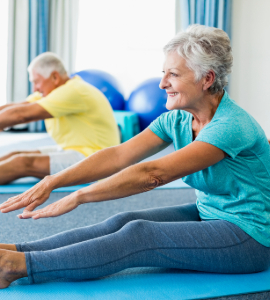
New Year Fitness Tips: Kickstart Your Health Journey
As we enter a new year, many people set ambitious goals centered around improving their fitness and overall physical health. Whether it’s losing weight, getting stronger, or simply moving more, the start of the year presents an excellent opportunity to focus on wellness. However, staying committed to a fitness journey can be challenging. Fortunately, with the right strategies, you can set yourself up for success. Here are a few approaches to help you achieve your new year fitness goals and make exercise a lasting part of your routine: Workout with a Buddy One of the best ways to stay motivated is by having an accountability partner. Working out with a friend, family member, or even a fellow gym-goer can make exercising more enjoyable and keep you on track. Whether you attend a group fitness class, train with a workout buddy, or join a local fitness community, having someone to rely on will encourage you to stick to your plan. Plus, celebrating your milestones together adds a sense of accomplishment and fun to the process. Find Movement That Works for You Exercise doesn’t have to mean lifting heavy weights or running on a treadmill. The key is to find a type of movement that excites you! Some people love high-intensity workouts, while others may prefer yoga, swimming, or cycling. If you dread your workout, you’re less likely to stick with it. Remember, the most important part is that you’re moving—whether it’s dancing, walking, or taking the stairs. If you enjoy what you’re doing, you’ll look forward to it and will be more likely to stay consistent. Any movement is better than none! Set Achievable Goals Having clear, realistic goals will keep you focused and motivated. Whether it’s increasing the number of daily steps, improving your endurance, or simply committing to a

More Than Just Relaxation – The Benefits of Massage
Massage therapy is often seen as a luxury or a treat, but did you know that it offers a wide range of health benefits that go far beyond relaxation? Whether you’re dealing with stress, muscle tension, or chronic pain, massage can be a powerful tool for improving your overall well-being. Here are some of the many benefits of massage and why you should consider making it a regular part of your health routine. Reduces Stress and Anxiety Massage is known for its calming effects, helping to activate part of the nervous system responsible for rest and relaxation. Regular massage can lower levels of the stress hormone, and increase serotonin and dopamine, which promote feelings of happiness and well-being. If you’re feeling overwhelmed or anxious, a massage can help bring balance and calm to your body and mind. Relieves Muscle Tension and Pain Whether it’s from sitting at a desk all day, an intense workout, or simply everyday wear and tear, muscle tension can build up in the body. Techniques like deep tissue massage can target specific areas of tension and help reduce chronic pain, improve range of motion, and relieve stiffness. The greatest area of improvement in pain reduction is for those experiencing chronic lower back pain. Improves Flexibility Regular massage can also increase flexibility by loosening tight muscles and improving joint mobility. Studies show up to a 7 percent increase in flexibility after receiving sports massage. This improvement is most noted in the hamstrings and hip flexion range of motion. Promotes Better Sleep If you struggle with sleep issues, massage might be the natural solution you’re looking for. By promoting relaxation and reducing muscle tension, massage helps prepare your body for a restful night’s sleep. Studies have shown that massage can improve sleep quality, especially for people suffering from

Healthy Holiday Sweets to be Festive and Fit
With the holiday season just around the corner, a delightful array of treats will be on display alongside the festive lights. While it’s tempting to dive into every sweet treat that comes your way, you can still satisfy your sweet tooth without derailing your health goals. Explore Alternatives Consider lowering sugar content by using artificial sweeteners or natural alternatives like honey, agave syrup, or maple syrup. If you’re baking, try using mashed bananas or unsweetened applesauce in place of sugar. These fruits not only provide sweetness but also add moisture and nutritional benefits. Make Smart Substitutions When preparing desserts, look for recipes that incorporate more wholesome ingredients such as oats, nuts, and fruits. These ingredients often require less white flour, sugar, and butter. For example, using almond flour or whole wheat pastry flour can add fiber, making your treats more satisfying. Baking fruits like apples, pears, or even berries can enhance their natural sweetness, while oats and nuts contribute fiber and healthy fats that keep you fuller for longer. Incorporate spices like cinnamon or nutmeg, which not only add flavor but may give your desserts a festive flair. Watch Your Portions Sometimes, a little taste is all you need! Opt for a smaller slice of pie or cake, and if you’re at a buffet or potluck, grab a smaller plate to help control your portions. This strategy allows you to enjoy a variety of desserts without the larger portion size. Additionally, consider sharing a dessert with a friend or family member, so you can both enjoy the sweet treat without the temptation of finishing an entire portion. Get Creative with Ingredients Think outside the box! For example, you can create a delicious chocolate mousse using avocados blended with cocoa powder and a touch of sweetener. Or try making energy bites
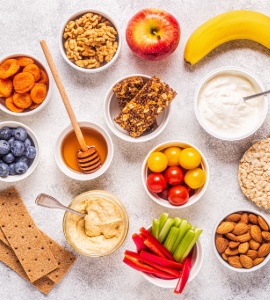
The Ultimate Guide to Healthy Snacks: Delicious, Nutritious, and Guilt-Free
Snacking often gets a bad rap, but it doesn’t have to be your downfall! In fact, when chosen wisely, snacks can be a fantastic way to fuel your body, curb hunger, and keep your energy levels steady throughout the day. Whether you’re looking to maintain your weight, build muscle, or simply make healthier choices, this blog will help you navigate the world of healthy snacks with ease. Here are some delicious, nutritious options to keep you satisfied and energized. Fruit and Veggies Fruit and Veggie Slices with Hummus Crunchy and satisfying, sliced veggies like cucumbers, bell peppers, and carrots paired with a dollop of hummus offer a great mix of fiber, vitamins, and protein. For a touch of sweetness, try apple slices with a small amount of almond butter. Berry Medley A mix of berries like strawberries, blueberries, and raspberries is not only visually appealing but also packed with antioxidants, fiber, and vitamins. This snack is perfect on its own or with a sprinkle of chia seeds for added texture and nutrients. Nuts and Seeds Trail Mix Create your own trail mix with a blend of almonds, walnuts, pumpkin seeds, and a few dark chocolate chips for a satisfying, energy-boosting snack. Nuts and seeds are rich in healthy fats, protein, and essential minerals. Chia Pudding Mix chia seeds with almond milk and a touch of honey or maple syrup. Let it sit in the fridge overnight to thicken. In the morning, top with fresh fruit or a handful of nuts for a creamy, satisfying treat. Dairy and Dairy Alternatives Greek Yogurt Parfait Layer Greek yogurt with granola and fresh fruit for a delicious and balanced snack. Greek yogurt is high in protein and probiotics, which are great for digestion and muscle repair. Cottage Cheese with Pineapple Cottage cheese is a
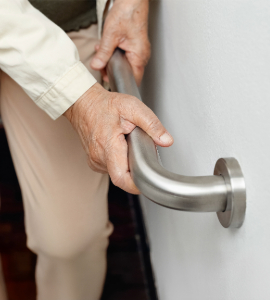
Stay Steady: Key Tips and Expert Advice for Preventing Falls
Falls are a major concern for older adults and those who care for them. Over 3 million older people visit the emergency room each year due to a fall, resulting in over $80 billion in medical costs. Falls are not only costly but also painful and can significantly impede one’s recovery and wellness. Among adults aged 65 and over, falls are the leading cause of injury and injury-related death. Despite these alarming statistics, there is good news: a lot can be done to prevent falls. Taking care of your health and ensuring that your home and surroundings are safe are crucial factors in fall prevention. Maintaining good physical health is essential for building a strong foundation of support. Regular exercise is vital, with the CDC recommending that individuals over 65 get around 150 minutes of exercise per week. Regular health check-ups, especially for vision and hearing, are important as they directly impact balance and stability. Loss of vision or hearing can result in the individual focusing more on compensating for these losses, leaving fewer mental resources available for maintaining balance. It’s also crucial to talk to your physician about all your medications and their potential side effects, as some medications can cause dizziness. Adapting your home for safety is another key aspect of fall prevention. Keeping your living space clean, ensuring clutter and cords are removed from walkways, and installing handrails and grab bars in areas like the bathroom and stairs are all essential. Making items easily accessible can help prevent the need to reach and potentially lose balance. Proper lighting is also important to see the space around you and avoid tripping hazards. To further raise awareness, the Sun Health Center for Health & Wellbeing is organizing the 10th Annual Stand Up to Falling Down event on September 25th.
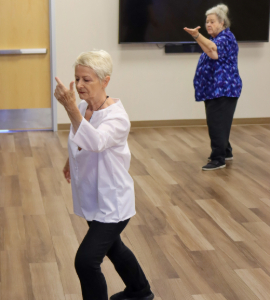
Transform Your Wellbeing with Tai Chi
Regular exercise is key to maintaining a healthy lifestyle and one practice that stands out for its unique approach is tai chi. This ancient Chinese martial art, originally designed for self-defense, has evolved into a gentle, low-impact exercise that combines physical movement with mental focus. Often described as “moving meditation,” tai chi offers a range of benefits for both your mind and body. Why Tai Chi? Tai chi involves a series of slow, flowing movements that integrate the mind and body, aiming to create harmony and balance. Its low-impact nature makes it accessible to people of all ages and fitness levels, making it an ideal choice whether you’re just starting your fitness journey or are looking for a new way to stay active. Balance and Fall Prevention One of the most significant benefits of tai chi is its ability to improve balance and reduce the risk of falls. By enhancing muscle strength and flexibility, tai chi helps to prevent falls, particularly in older adults. A study published in the Journal of the American Geriatrics Society found that tai chi participants experienced up to 50% fewer falls compared to non-participants. The U.S. Centers for Disease Control and Prevention (CDC) acknowledges tai chi as an effective method for fall prevention. Stress Relief and Mental Clarity The focus of tai chi on slow, deliberate movements promotes concentration and mindfulness, allowing you to set aside daily stresses and worries. This mental clarity not only reduces stress but also contributes to overall well-being, helping you feel more relaxed and centered. Cognitive and Physical Health Beyond physical benefits, tai chi has shown promise in enhancing cognitive function. Research indicates that older adults who practice tai chi can experience improved memory and mental agility. Additionally, tai chi is beneficial for managing chronic pain and diseases. For instance,

